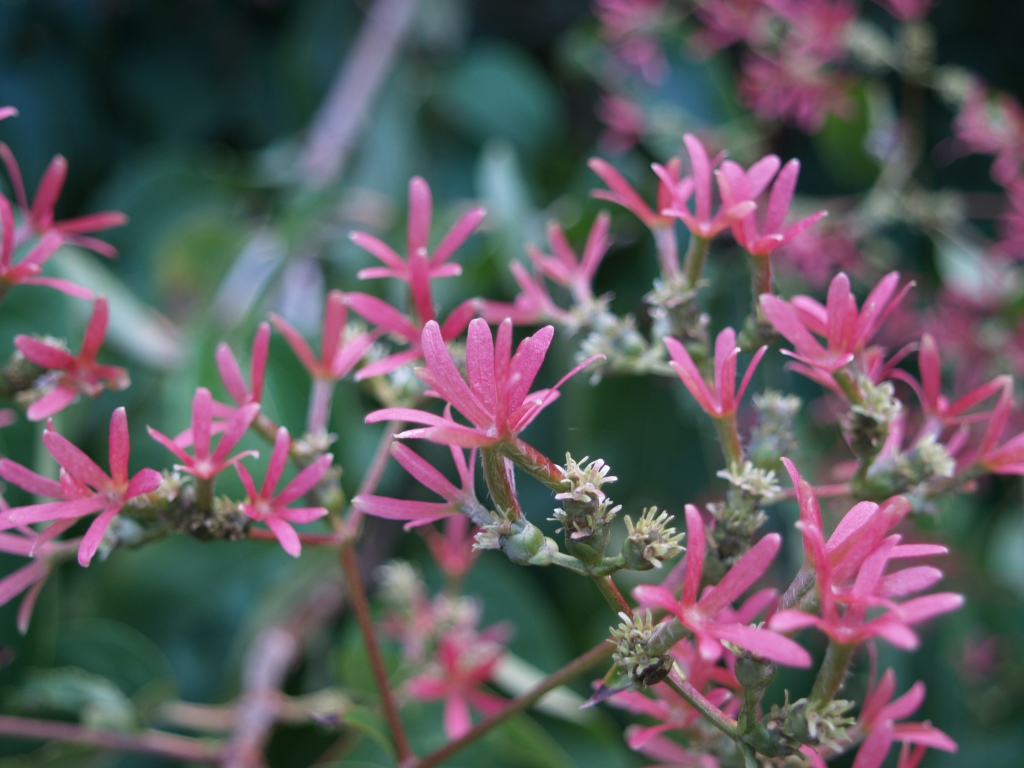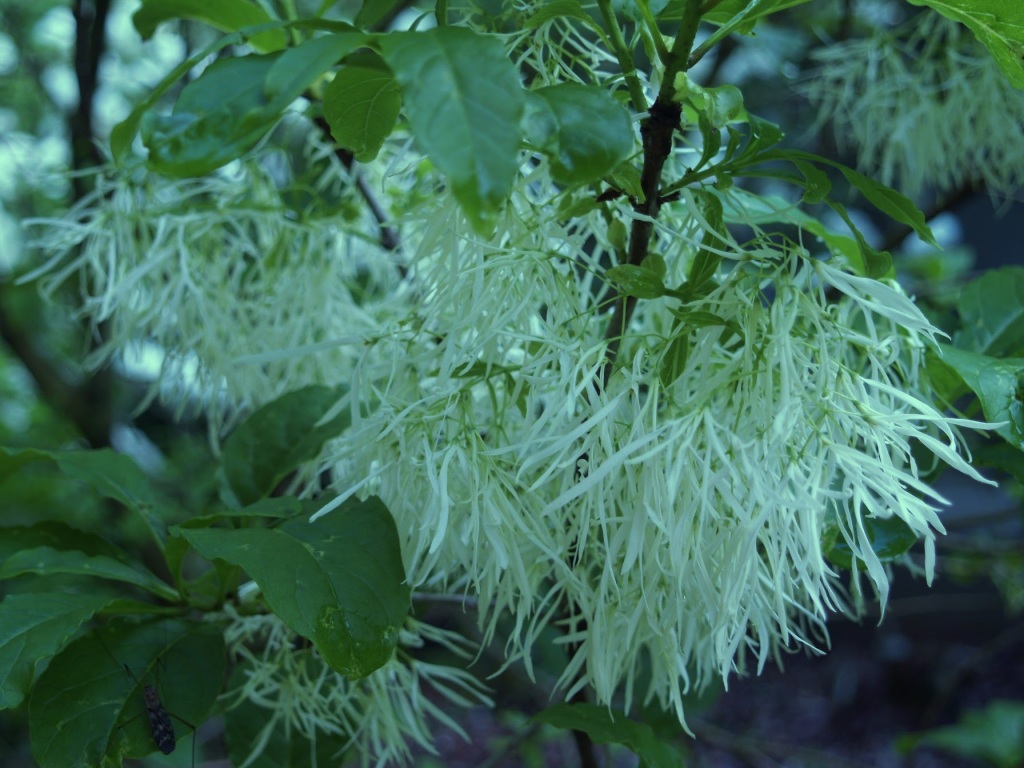When a prized Seven Son tree (Heptacodium miconioides) was lost in a storm several years ago, I fretted and debated its replacement, and unable to find another Seven Son of anywhere close to the size needed to fit into this mature garden, I reluctantly settled for a Red Horse chestnut (Aesculus carnea, below) large enough to immediately fill the void. Fortunately, I recently found and planted a compact cultivar of the Seven Son (‘Temple of Bloom’) in a small space where a purple leafed smoketree (Cotinus) shows signs of declining, and here an eighteen inch shrubby tree works for the short term. And now, with the new Seven Son and the horse chestnut the garden features two marvelous trees instead of one (of course there are many other trees in this garden).

Again, a seeming tragedy that ends for the best since I have found the horse chestnut to be a wonderful tree in flower and in leaf, yet I wonder why it is not more widely planted. Yes, its autumn foliage color is a a dull yellow, and never highly ornamental, but there is no finer medium sized tree (to thirty to forty feet tall), and one that is also more appropriate for many properties than maples and oaks that are fine trees but fall far short of the horse chestnut’s ornament.

The four native fringetrees (Chionanthus virginicus. below) are beginning to flower, and while the ribbon-like blooms last only a week, the trees are magnificent in flower. A group of three in the rear garden has been obscured by two redbuds until recently, when one redbud that leaned severely was removed. This opens the view to the fringetree from a certain angle, though open spaces do not last long here, and I am anxious to fill the space that will again obstruct the view.

In recent years the lower third of the rear garden has become consistently damp, resulting in the loss of several trees, most recently a Wolf Eyes dogwood (Cornus kousa ‘Wolf Eyes’). Despite my affection for dogwoods, I was not tempted to plant another in the moist soil, so when a ‘Tokyo Tower’ fringtree (Chionanthus retusus ‘Tokyo Tower’, below) was available, there was no hesitation.

Unfortunately, the flowers of ‘Tokyo Tower’ were damaged by a May freeze just after opening a year ago, so I look forward to the blooms that will shortly follow as the native fringetree fades.
Maples are excellent trees also. They are uncommon here, but I would add more if I could for color in autumn. The only native maple, bigleaf maple, is excellent, but turns only yellow for autumn.
Here, maples are everywhere, the predominant forest tree and in landscape plantings, even in townhouse yards that are far too small for a tree that grows this large.